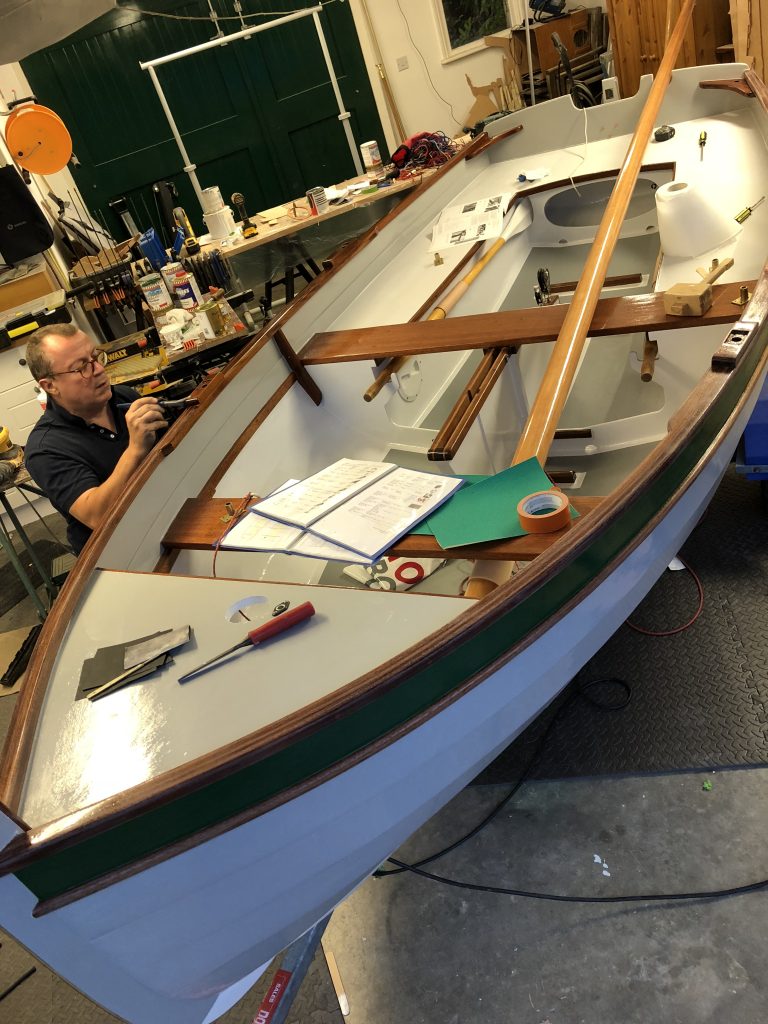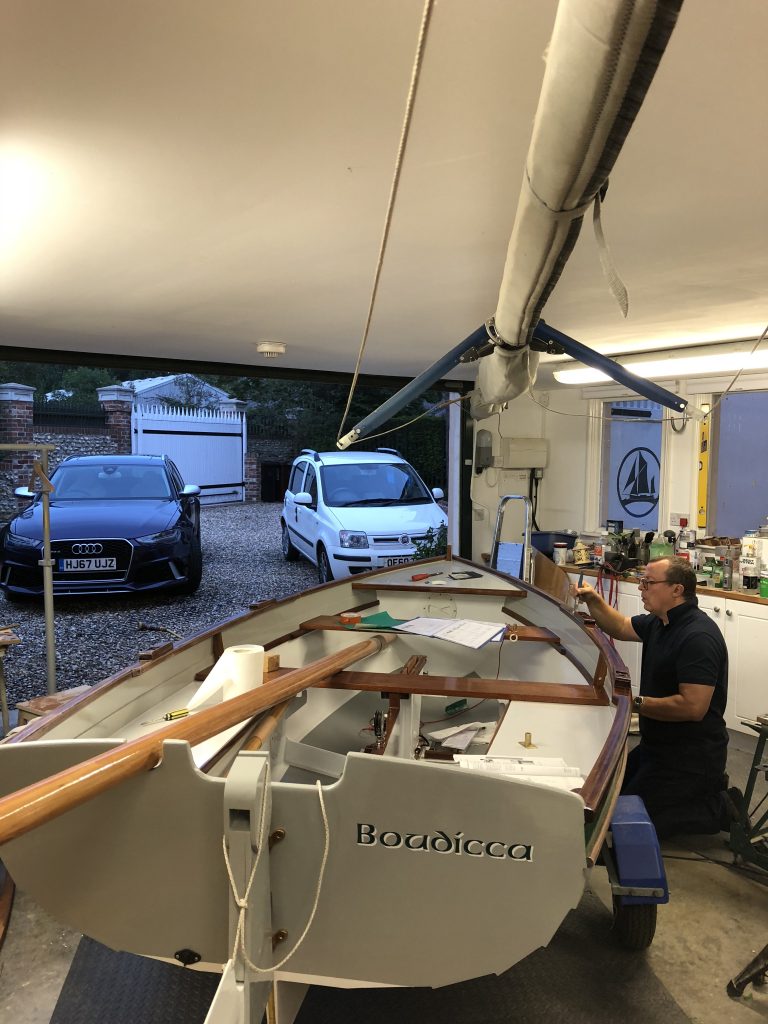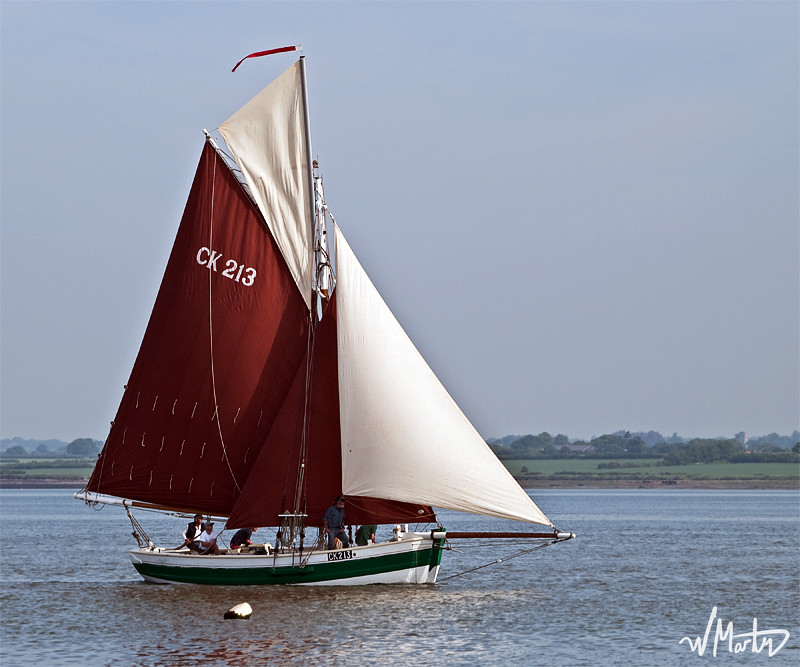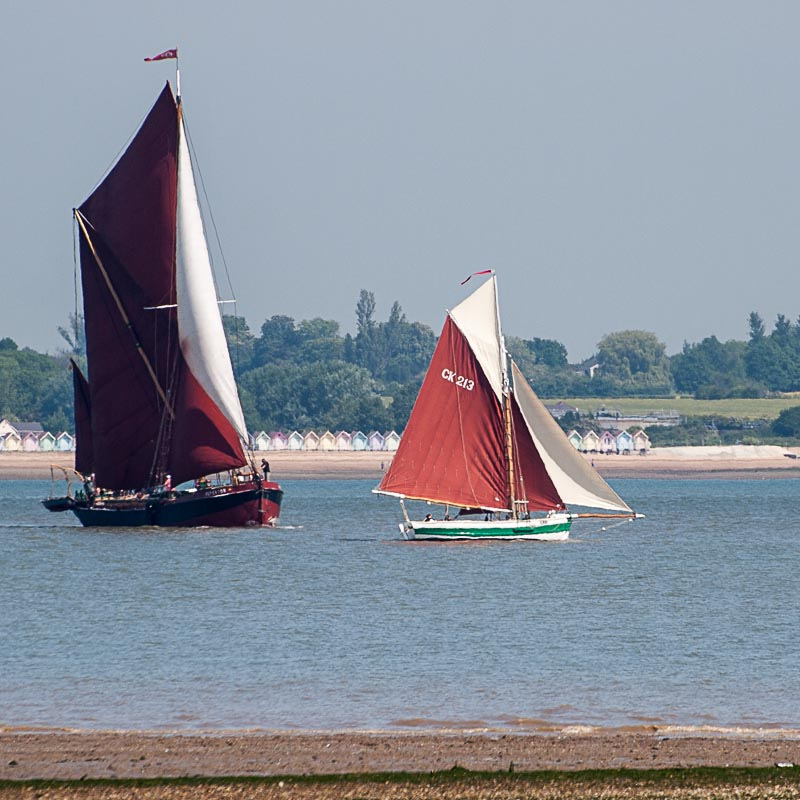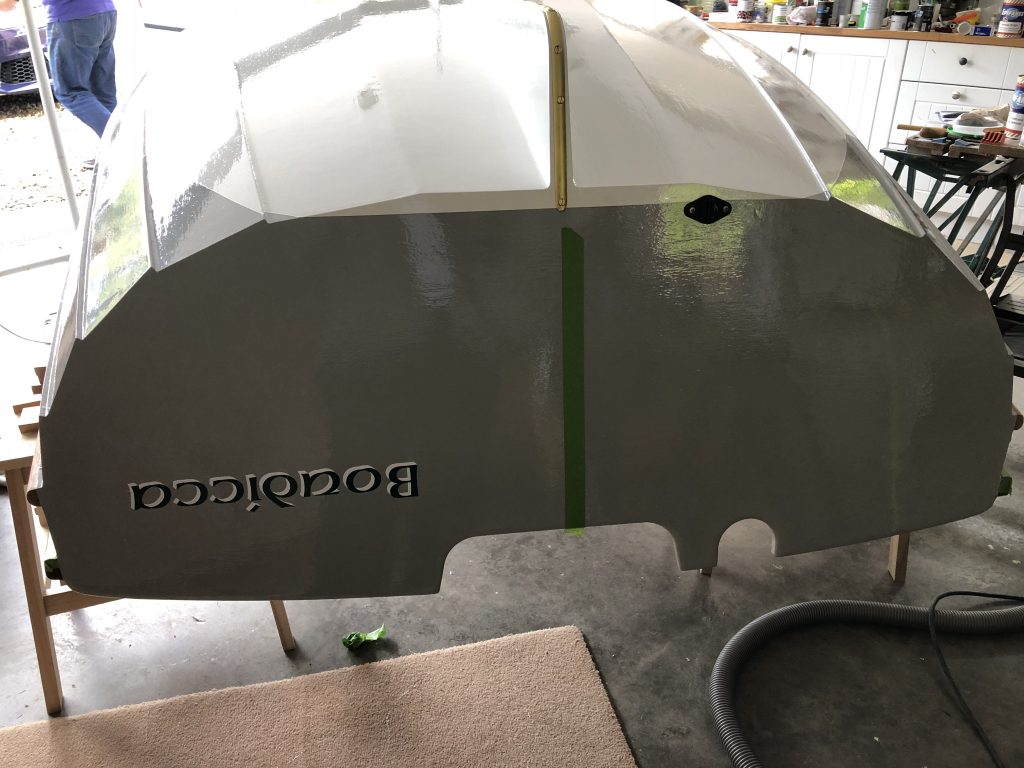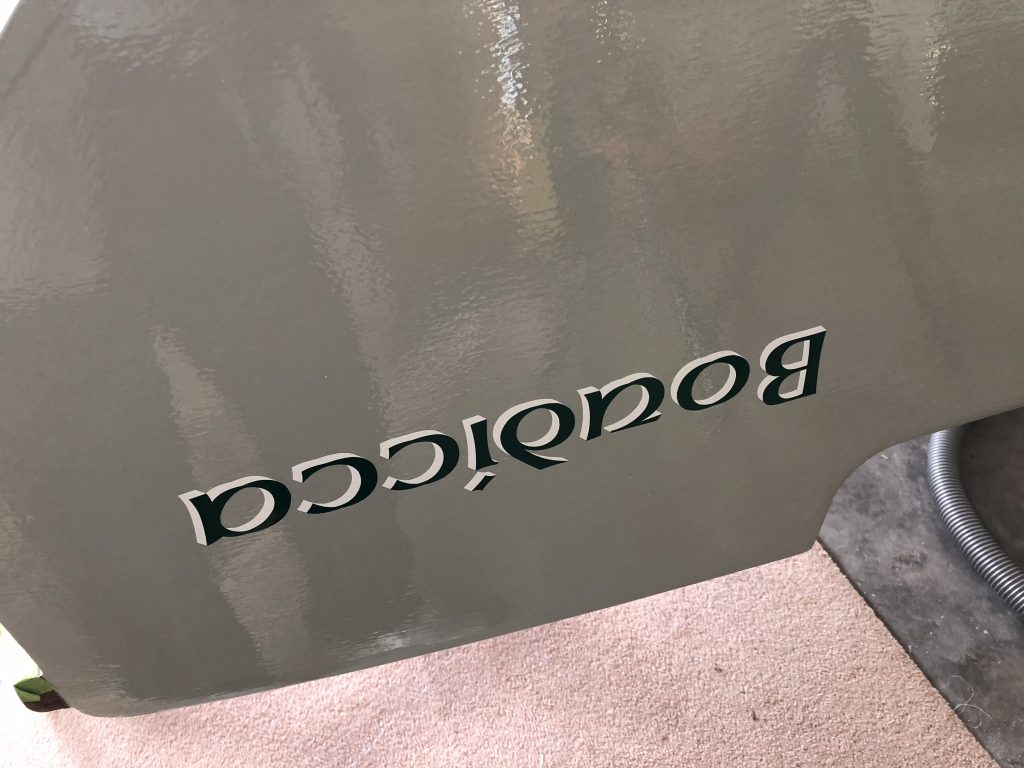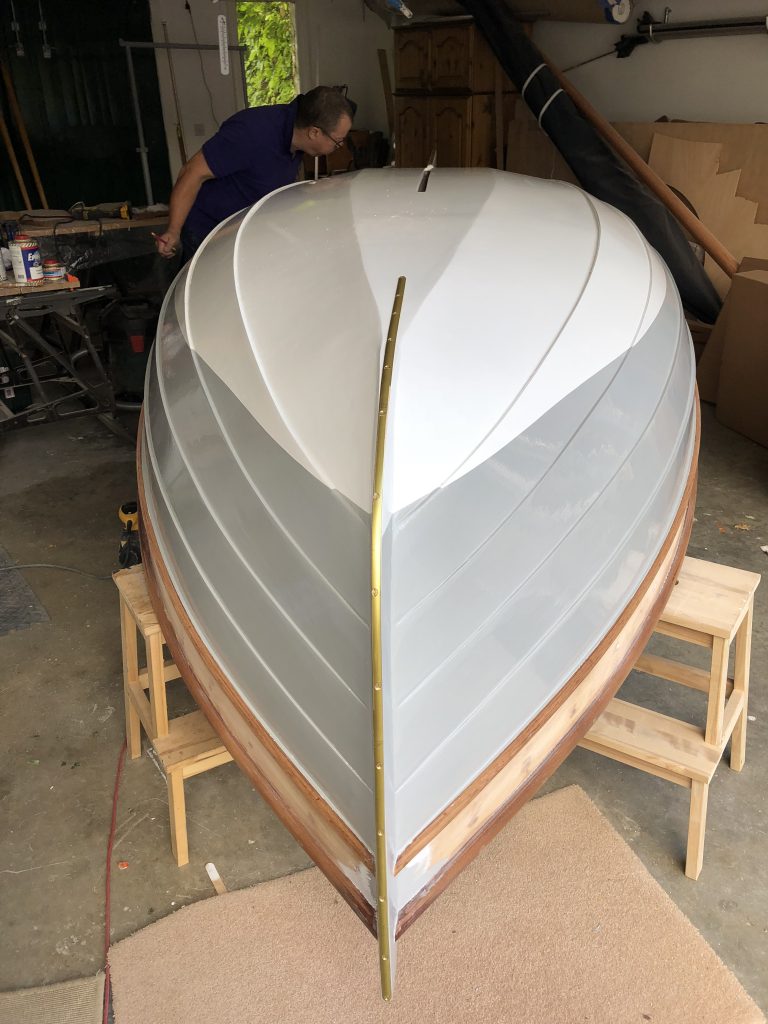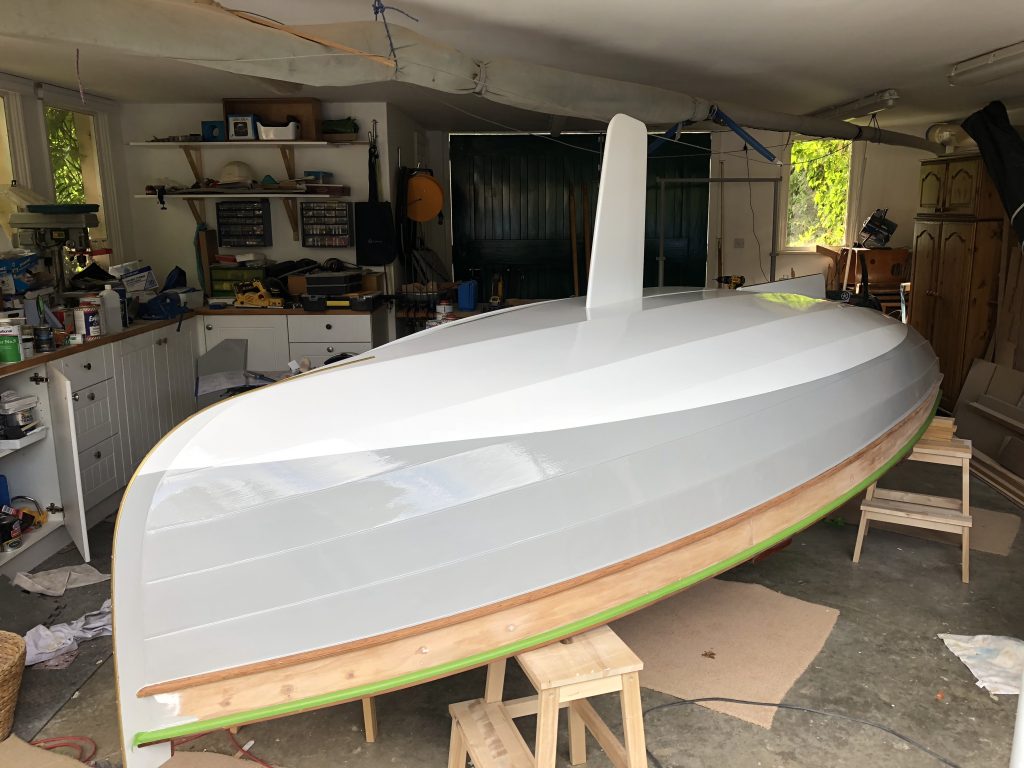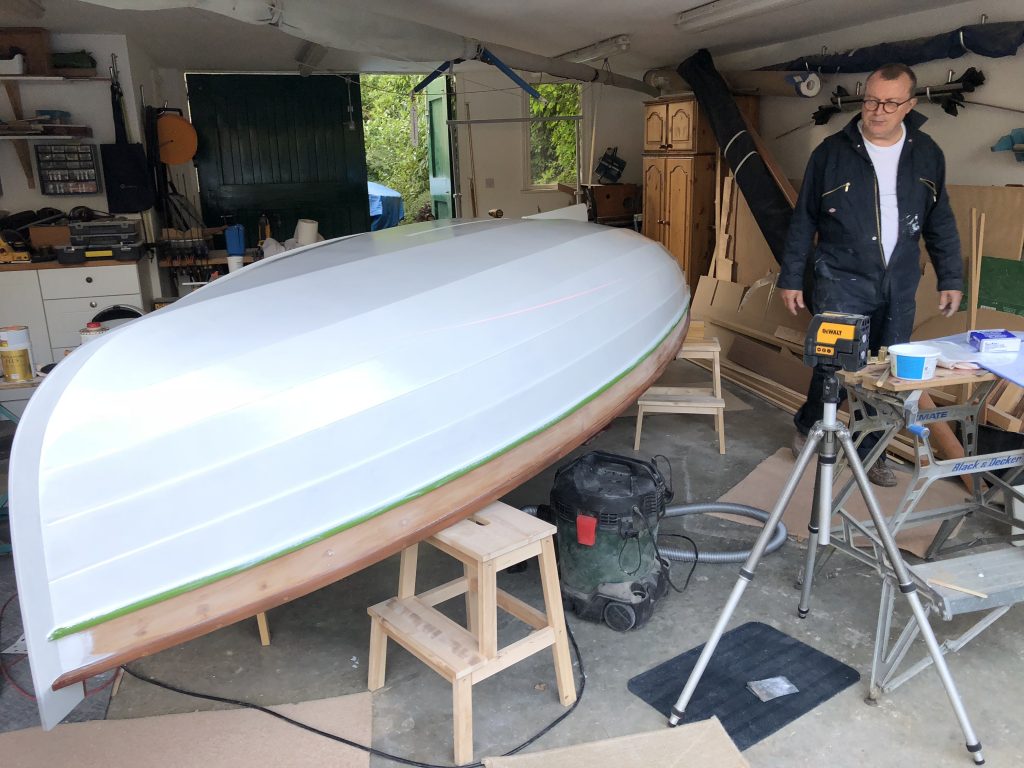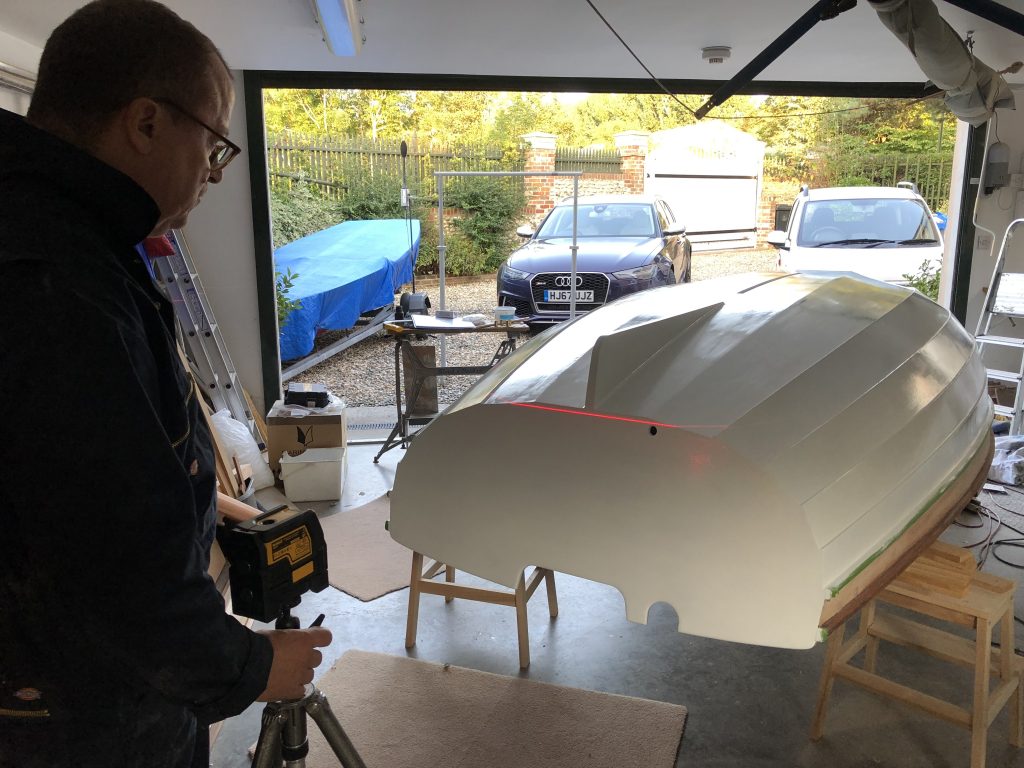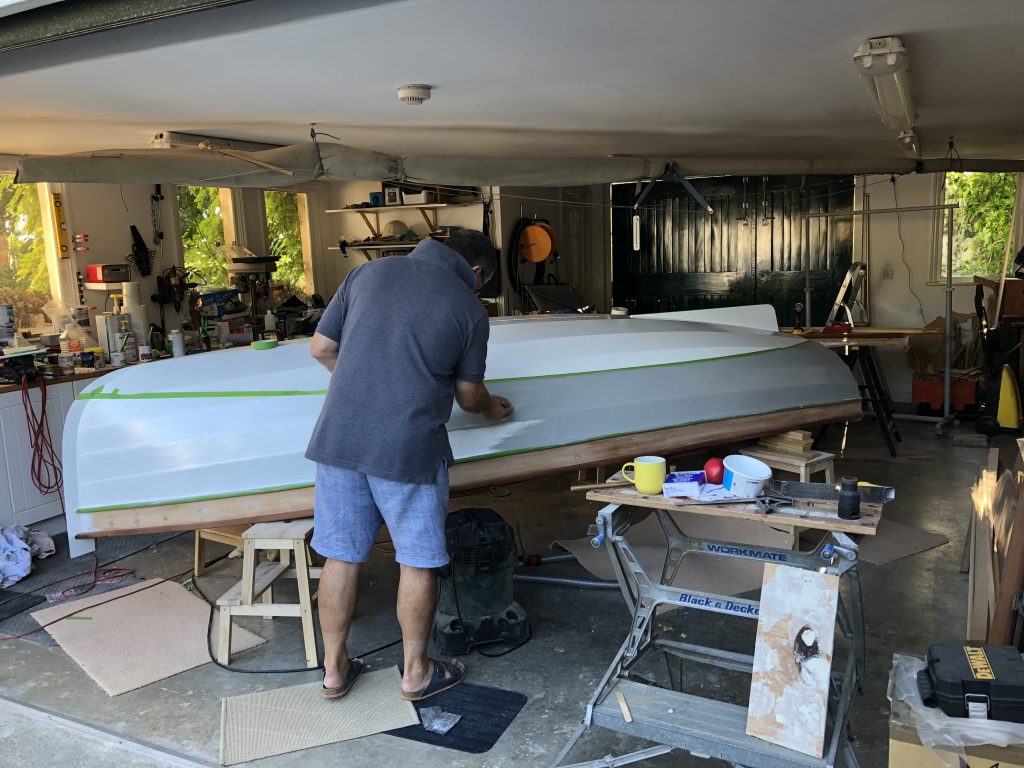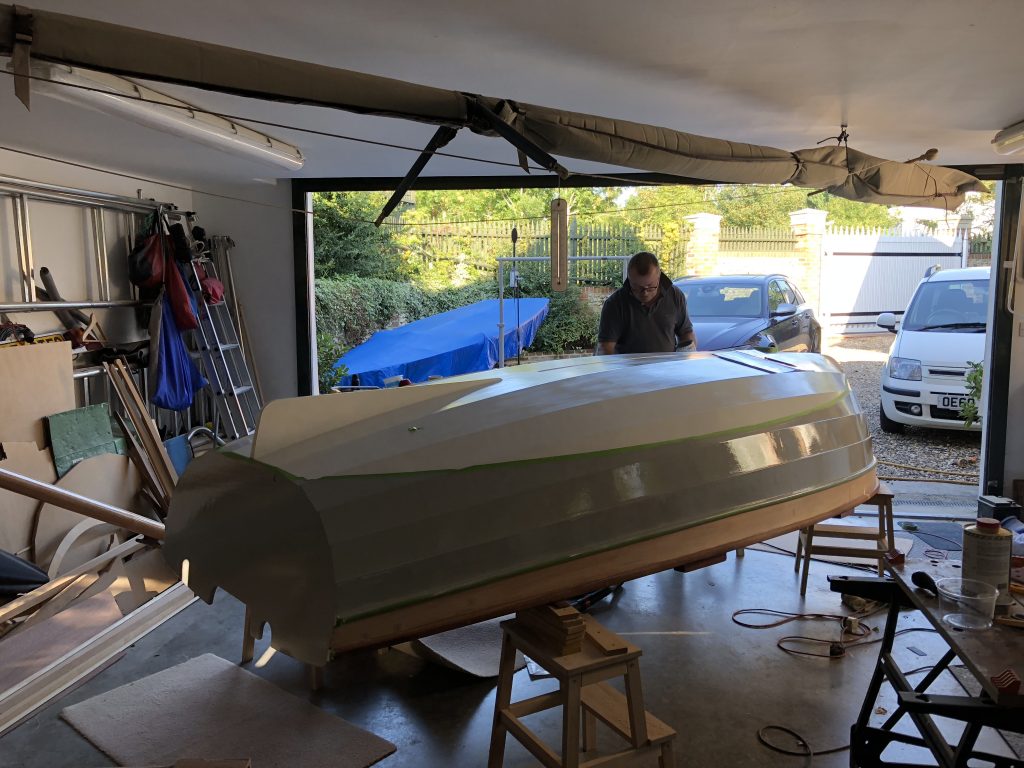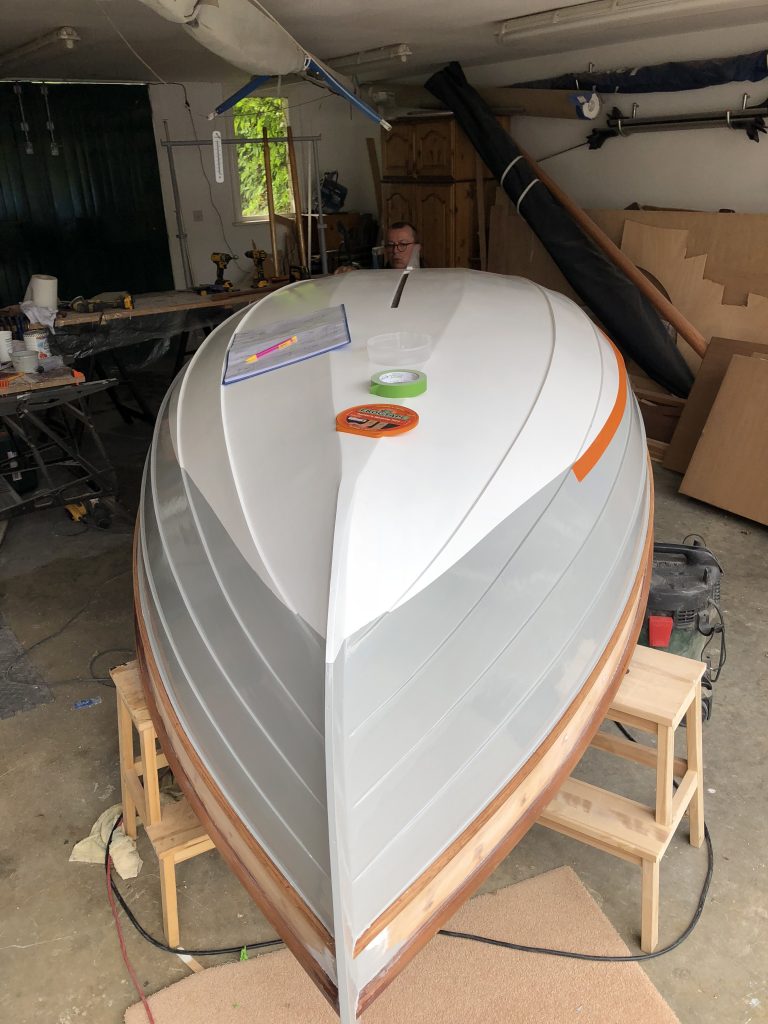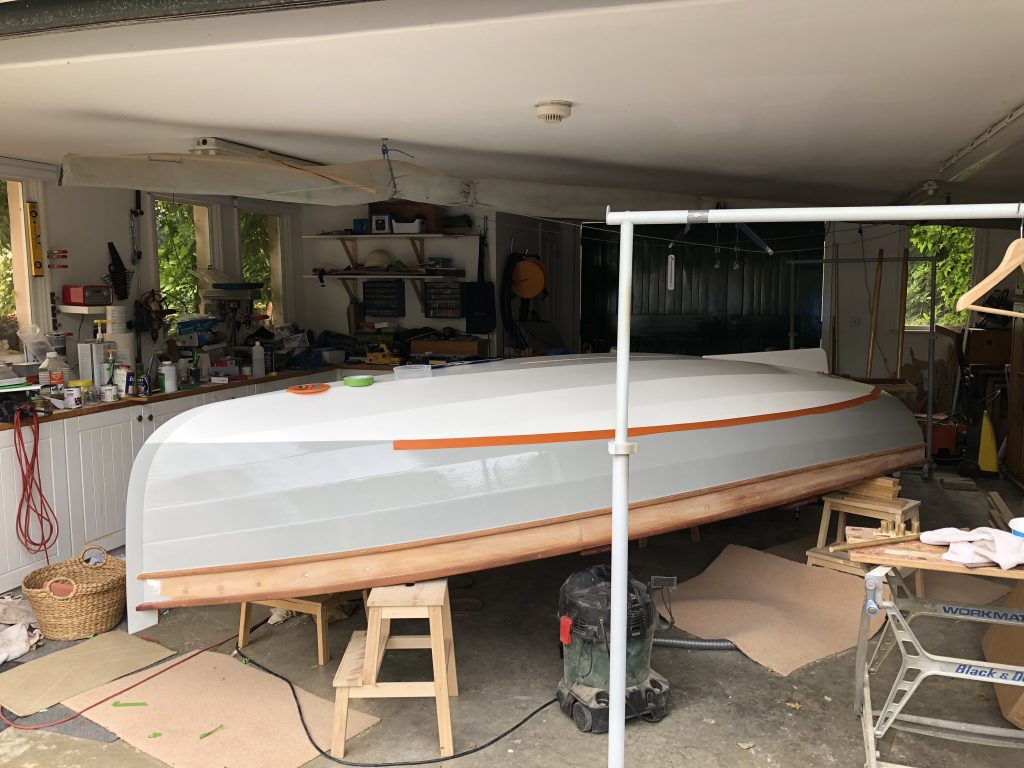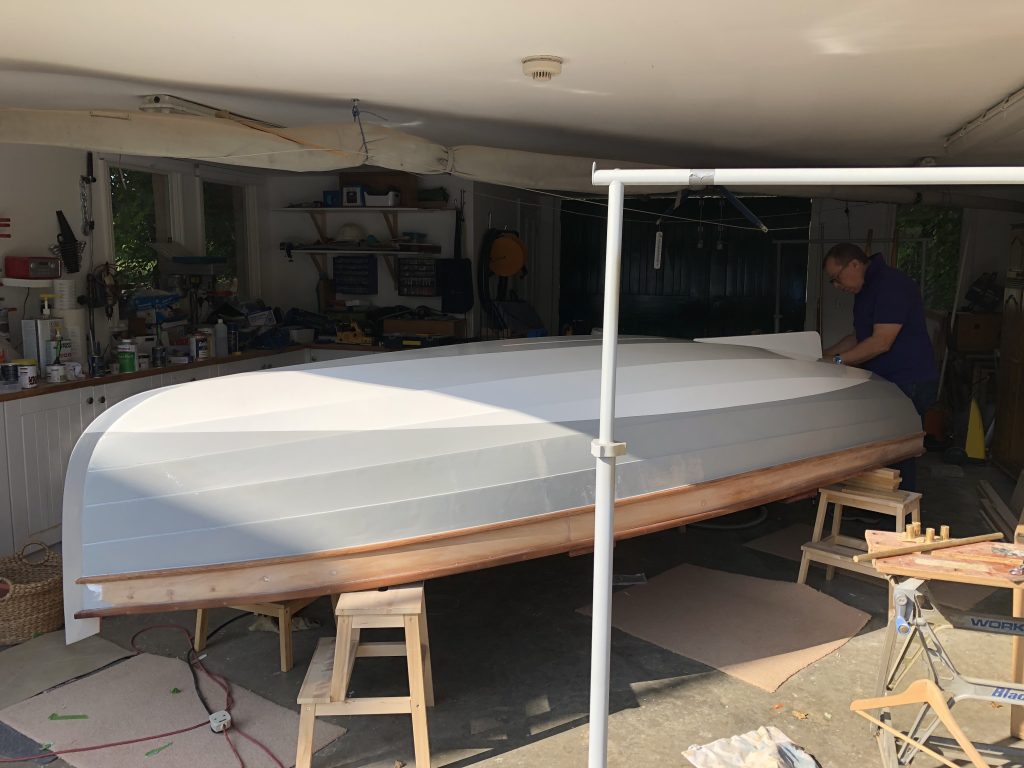With the underside of the hull finished, it was time to turn the boat over to finish the painting and brightwork.
Fortunately, as a result of another rash purchase of a small 10ft rowing/sailing dinghy for use on the canal, I had a handy road trailer which was forced into service.
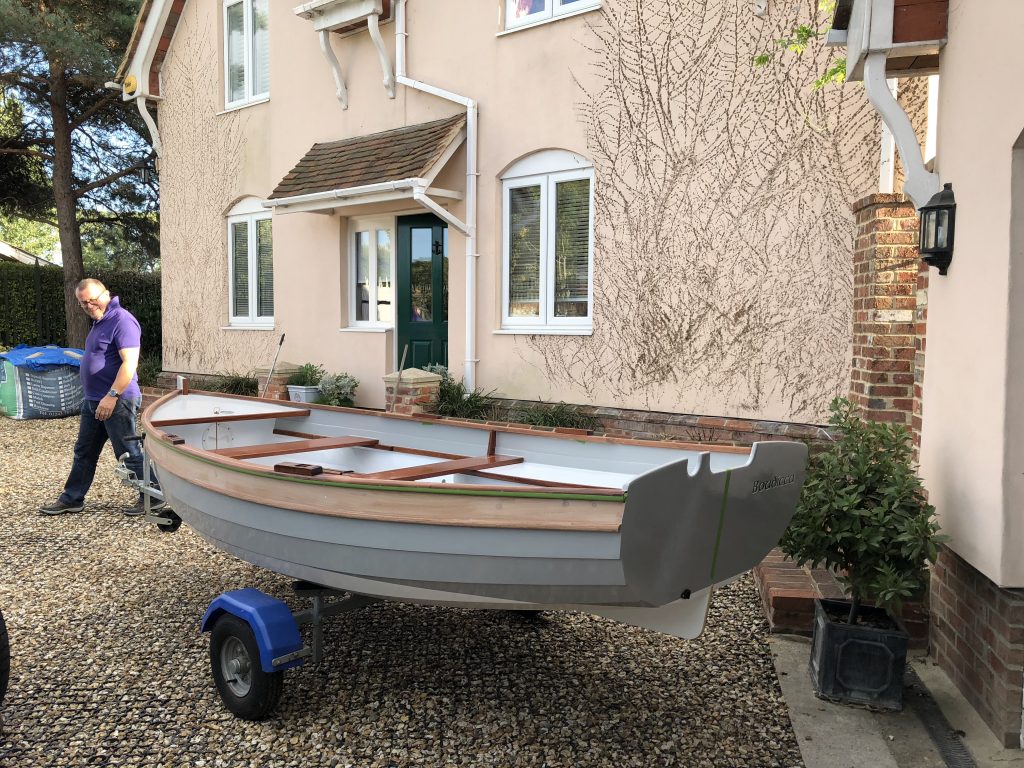
Leaving the garage for the first time!
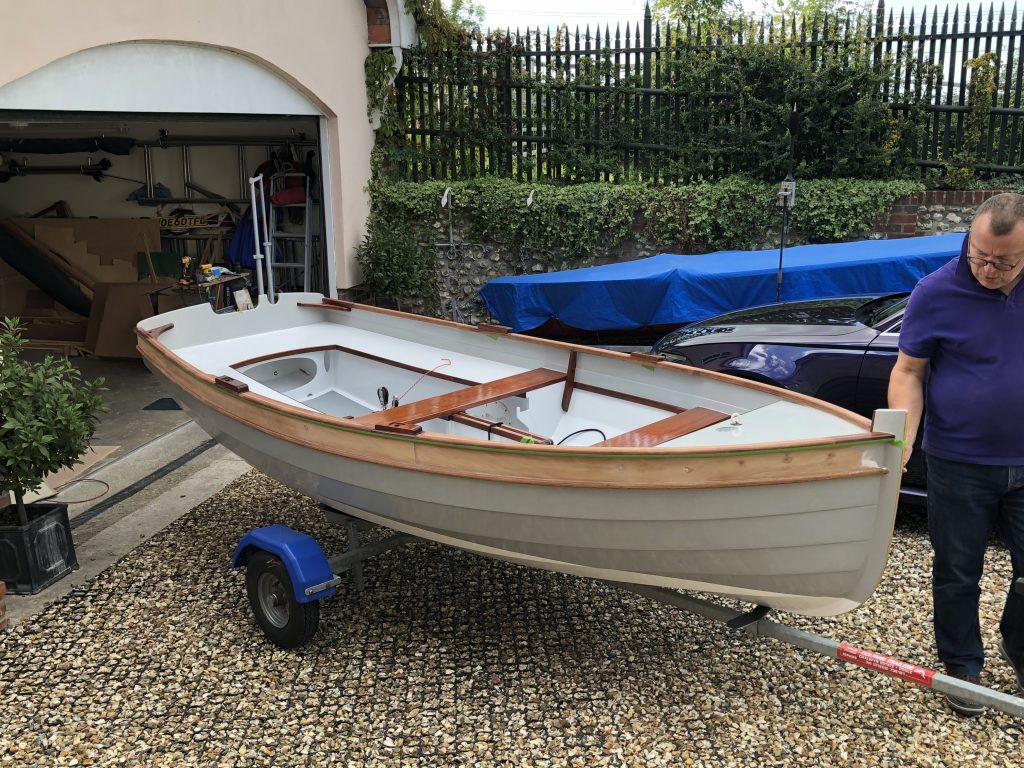
A nice fit on the road trailer
The final painting job is the sheer strake in green, and varnishing the rubbing beads and any remaining brightwork. Again, don’t stint on the varnish – two-pot International is incredibly tough, and gives a good finish on well-prepared surfaces
The transom fittings were also added – I thought about using modern Seasure pintles for this, as the cost of bronze ones from Classic Marine was exhorbitant. But in the end, why spoil the ship for a ha’porth of tar, so I splashed out on the real thing, including gunmetal rowlock sockets and a couple of fairleads.
I ended up not making the oars from scratch as my friend Bill donated me a pair, which I tarted up to match, and they fitted in the stowage very snugly (see above). In practice, these turned out to be slightly too short, so I might revert to making them, as the material is in stock!

